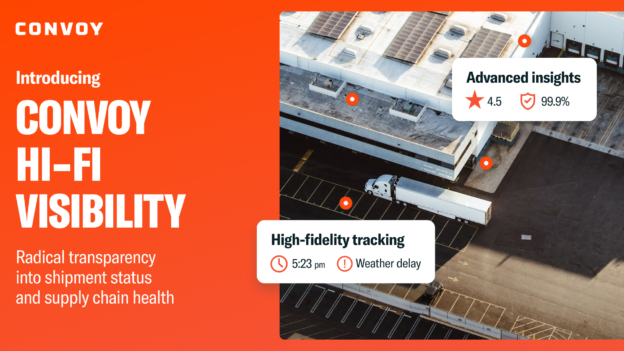FreightWaves August Webinar Recap and Tips for 2019 RFP Season
Shippers • Published on August 18, 2018
Thanks to all who attended Thursday’s FreightWaves webinar sponsored by Convoy. With the 2019 RFP season right around the corner, we found the session to be incredibly valuable (and timely)!
What follows is a summary of the webinar along with additional Convoy insights that we believe will arm shippers and carriers with critical macroeconomic intel to help drive successful outcomes into 2019.

The team at FreightWaves addressed a comprehensive set of economic indicators, including trends and statistics from labor markets, energy markets, international trade, new home construction, used truck prices and volume of new truck purchases. Convoy has aggregated several insights from the session and summarized into easily digestible themes below.
Truck Capacity: Is more capacity coming? When?!
New truck purchases are at an all-time high, which is directly tied to capacity, though most of these orders are not expected to land until mid-late 2019 and into 2020. This is also a signal that executives in our industry have a bullish outlook on the market, but many on Wall Street are concerned that record truck purchases will lead to excess supply, causing an over-correction and stifling rates in subsequent years.
Additionally, the past several months have seen significant job creation in the trucking industry – historically a strong indicator of truckload capacity. This is promising because industry jobs remained flat from 2015-2017. We expect the recent uptick will lead to increased capacity. Like with new truck sales, this impact will take several months to be felt in the market.
In the short-term, trucking capacity will continue to be tight as it slowly expands. Any significant shocks to market will introduce a great deal of volatility for freight RFPs for the foreseeable future.

(Source: SONAR – EMPS.TRUK)
Trade Wars: What impact will tariffs have on trucking?
FreightWaves experts believe that proposed tariffs on imports and exports will eventually be reduced and the impact will be minimal. In the meantime, many companies have already bulked up inventory ahead of the expected tax.
A strong global economy, coupled with preemptive inventory building, has led to a surge in container volume from China to North America in 2018, despite costs of containers on that route nearly doubling over the same time period. This has resulted in significantly higher truckload freight volumes originating in San Francisco and Los Angeles, for example, exacerbating tight capacity on the West Coast.
If existing plans hold, roughly 50% of all US imports from China will be subject to tariffs. Though this sounds like a lot, it actually represents only about 0.1% of US GDP. The bigger risk of a trade war is the potential spillover effect on consumer and manufacturer confidence.

(Source: Census Bureau)
Outlook: Where is the market now? Where is it going?
After increasing throughout May and June, spot rates fell in the traditionally softer month of July. Experts at FreightWaves and Convoy believe that tight capacity will continue to put upward pressure on rates through Q3. We also anticipate a strong Q4, with a winter peak in mid-late November.
Looking into 2019, we expect another fairly tight capacity year. Barring any major shock to the market, we anticipate growth in contract rates to the order of 4-6% YoY.
Advice for a successful 2019 RFP season
1) Lock in sustainable contract rates
Paying a little more up front will result in a successful award characterized by elevated tender acceptance, and lower frequency of going off guide to the spot market. This will also reduce the operational burden of hosting off-cycle mini-bids to reallocate lanes that are not being properly serviced.
2) Reward tender compliance
Transportation providers have had plenty of opportunities to make money in the spot market in 2018. Conversely, upholding contract rates set in Q4’17 or Q1’18 caused many to lose money or operate at undesirable margin profiles. Brokers and carriers that honored their contract rates during peak season saved shippers from paying record premiums in the spot market. Funnel a larger share of your spend to these providers; even if it means locking in slightly higher primary rates in some cases, it will likely save you money over the course of the year!
3) Demand more than capacity from your providers
Align your company with a partner that can do more than comply with tender acceptance and on-time service requirements. In today’s digital age, data-driven companies like Convoy can unlock unique insights into your supply chain, driving better decision making and stronger outcomes.
Shippers – interested in learning more about our industry-leading tender compliance, on-time service, and data-driven insights? Call us at 206-209-0305
Carriers – interested in a hassle-free experience, automated detention, free quick pay, and unique offerings such as Request-A-Load? Call us at 206-202-5645



